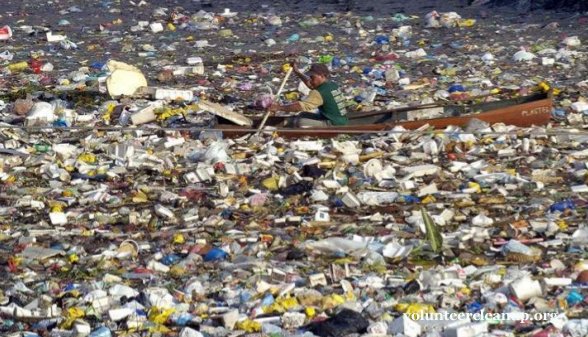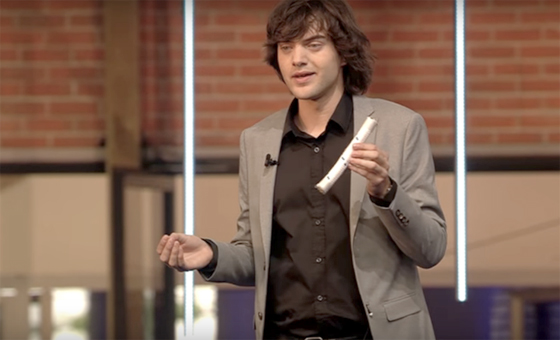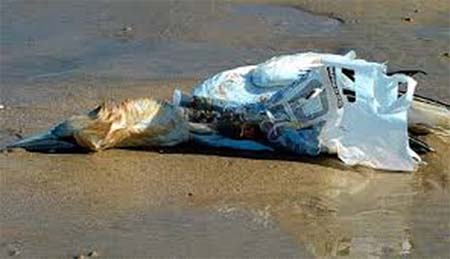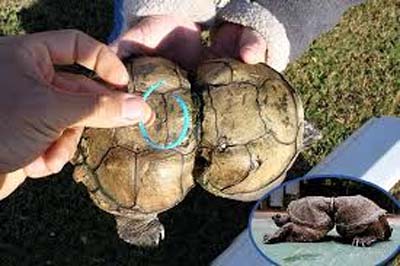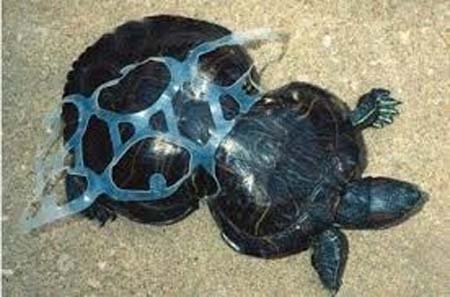OCEAN GARBAGE UPDATE
In our November 2016 Newsletter, we posted an article that contained information about the dilemma of plastic waste in our oceans:
Approximately 50% of plastic waste ends up in landfills where it will sit for hundreds of years because there is limited oxygen and a lack of microorganisms to break it down. The remaining percentage of plastic goes into the environment and is ultimately washed out to sea.
The plastic that eventually reaches our oceans does not disintegrate into organic substances such as natural substances do. The particles just keep getting smaller and smaller. Eventually they become as small as the algae and plankton that are the basis for the marine food system. Shrimp, birds, and fish consume these particles and it can kill them. Then the chemicals in these plastic pieces can be absorbed by their predators which can ultimately be passed on to humans.
Additionally, plastic particles act like sponges for waterborne organic pollutants such as PCBs, pesticides, and herbicides, etc.
Ocean gyres are large circular current areas formed by global wind patterns and ocean currents. Debris, made up mostly of small particles of plastic, is drawn into these areas by the circular motion of the gyre. When the debris eventually makes its way to the center of the gyre, it becomes trapped and breaks down into a plastic soup. These are called ‘garbage patches’ and have become a major concern for oceanographers and ecologists.
According to the Nation Geographic, the Indian Ocean, North Atlantic Ocean, and North Pacific Ocean all have significant garbage patches. The garbage patch in the North Pacific Ocean between Hawaii and California is sometimes called the Pacific trash vortex or the Great Pacific Garbage Patch. The Great Pacific Garbage Patch could be called the largest ‘landfill’ in the world!
ONE YOUNG MAN IS PLANNING TO MAKE A DIFFERENCE!
Boyan Slat was a 17 year old Dutch high school student when he went on a diving trip to Greece. As he entered the ocean and became totally surrounded by plastic waste, he had an epiphany. He realized this plastic waste in the ocean would be one of biggest environmental issue problems his generation will have to face.
Boyan knew about garbage patches and he thought the problem was being worked on. But after his Greece trip he decided to do some research and found that most of the solutions that had been presented were ineffective. So this amazing young man, decided to put his social and educational life on hold and focus his entire time on working out a solution, even though it seemed the odds might be against him.
Now, just 6 years later, with donations primarily from private sources totally millions, the 22 year old is ready to launch the first phase of his invention in early 2018. He estimates his design solution will be able to collect about 50 percent of the plastic in the Great Pacific Ocean Garbage Patch in just five years!
BOYAN SLAT'S INVENTION
His design utilizes massive floating booms that sit on top of the water. They actually act like a mini-coastline. In the same way our beaches collect plastic waste, the boom gathers the waste and pulls it to its center. A boat will be sent to the area about once a month to collect the garbage.
The booms will not be attached to the ocean floor (savings millions of dollars) but will be suspended in the ocean and attached to anchors that will float deep down below, allowing the booms to move slowly around. They will be held in place for the most part by deep water tides. Whatever forces move the plastic around will also move the cleanup systems around making them very much like plastic magnets.
Slat’s design is solar-powered, modular, and flexible enough
to move with the tides. He is planning to have up to 50 devices ready, 0.6
miles each. If one device should break down, there would still be 49 others
continuing to operate. One of his devices will be tested later this year as the first stage of his design is put into place.
WHY SLAT BELIEVES THE CLEANUP MUST START NOW
Right now, only 3% of the plastics in the garbage patch have become microplastics. Most are still large enough to easily fish out. In a few decades, the large objects will start breaking down into small and dangerous microplastics if cleanup does not proceed.
WHAT WILL BE DONE WITH THE COLLECTED PLASTIC WASTE?
The plastic can be recycled in an array of products such as phones, chairs, sunglasses, car bumpers, etc, and the money can be used to further fund the cleanup operation.
PLEASE WATCH THE FASCINATING VIDEO BELOW FOR SLAT'S PRESENTATION
Boyan Slat is an incredible young genius. Most amazing is the majority of the money for his project has been raised from private sources.
His idea uses the concept that instead of going out and trying to remove all the plastic from the oceans with boats and nets (taking billions of dollars and thousands of years), why not use the natural forces of the ocean to bring the plastic to us.
BOYAN SLAT'S AWARDS
- Youngest-ever recipient of the UN's highest environmental accolade: Champion of the Earth.
- Awarded the maritime industry of Norway's Young Entrepreneur Award in 2015.
- Included in Foreign Policy's 2015 list of preeminent thought leaders.
- Included in Forbes' 30 under 30 edition in 2016.
- Chosen by Reader's Digest as the European of the Year in 2017.
- Awarded the Thor Heyerdahl Award, International Maritime Environmental Award in 2017.
- Named one of the 100 world's most intriguing entrepreneurs by Goldman Sachs.
He is founder and CEO of The Ocean Cleanup.
WHAT SCIENTIFIC CRITICS SAY
Critics say Slat's method will not do enough and could be a distraction from the real problem, the amount of plastic waste that enters the oceans. If plastic waste can be reduced, they say, the problem will take care of itself in years to come.
Slat is not affected by the criticism. Time will tell if his design will do what it is supposed to do. We will keep you updated.
BOYAN SLAT- HIS IDEA IN ACTION-2018
For more and updated information on the environmental impact of ocean garbage, as well as how this article inspired another young person to research and share information on ocean garbage with others, please see our article, Ocean Garbage Update 2.
"The Cleanest Clean You've Ever Seen."
by
ABC Oriental Rug & Carpet Cleaning Co.
130 Cecil Malone Drive Ithaca, NY 14850
607-272-1566
